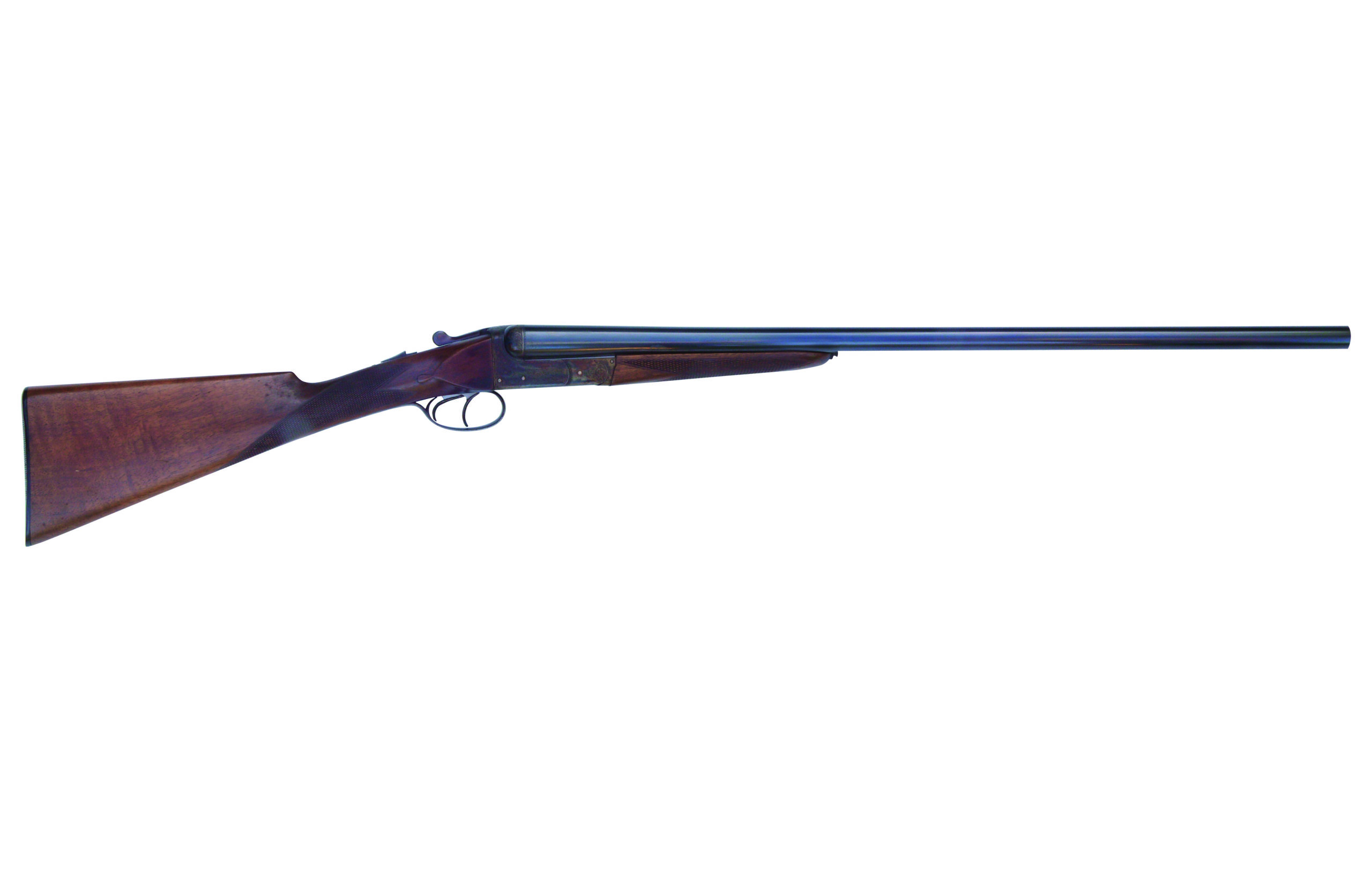A “sleeper” by John Blanch and Son
Known in the trade as a sleeper, this side-by-side ejector is a real piece of history, says Lewis Potter

The John Blanch shotgun is that ultra-rare item, a shotgun that has lain unused for most of its existence; what is called, in the trade, a “sleeper”. In more general terms “barely shop-soiled” would be an accurate description of condition.
What is a sleeper?
Why is it that often a fine gun is put away and not used? Much of the time we do not have an answer to that question. We do know that sometimes a sleeper may have a comparatively minor fault that nonetheless rendered it inoperable early in its existence, or perhaps it was put away due to a bereavement or just kept as an investment by a collector. Often, though, they are working guns rather than a collector’s piece and the “sleeper time” spans more than one generation of potential users, which only heightens the mystery.
Who is John Blanch & Son?
John Blanch, who for a few short years worked for John Manton, set up in business in 1813 and was an early advocate of the breechloading gun. In 1848 John’s son, William, became a partner and they were well known for producing quality guns. In 1915 J. Blanch & Son moved to 20 Cullum Street, London, leaving there in 1928. This gun bears that address, so there is a date window in which it was made. However, the proof marks pre-date 1925 and, allowing for the war years and the immediate aftermath, a likely period of manufacture is between 1920 and 1924.

The only visible wear on this John Blanch & Son side-by-side ejector gun is on the tang of the trigger-guard
A special gun
At first glance it is a good-quality double-trigger boxlock ejector gun with a sound but not outstanding walnut stock: on the face of things, nothing rare or exceptional. Yet what makes it really special is the condition. It could have been made only a couple of seasons ago, rather than more than 90 years in the past. It is a gun out of time.
The only visible wear is the blacking on the tail or tang of the trigger-guard, partly polished away, an indication that it had been carried quite a bit, probably broken with the butt resting on the user’s shoulder. It is not always appreciated that a tweed jacket can be the culprit in rubbing away blacking. Otherwise, apart from some very minor handling damage near the toe of the stock and a fading of the oiled finish, it exhibits very little use.
The gun opens and closes like new, there is no visible wear on the barrel lumps, the chequering on the fore-end and diamond hand stock is crisp and clean and the colour case hardening unmarked. This last is important and a good indicator of use. Quite a few polished actions were originally colour case hardened but when that finish became worn and shabby, an overall “old English” polished finish restores the appearance. On the Blanch there is not even any finish missing along the bottom edges of the action bar, which is usually the first place to be affected. Rather unusually, the triggers are colour case hardened, though the blades that engage with the sears are polished as normal. Apart from a dull appearance, once again this very vulnerable finish on the triggers is virtually unworn.
The only fault as such is that the action of the triggers is a little sticky and the safety button stiff to operate. This is often caused by the old lubricant taking on the consistency of varnish where it almost sets and can even lock parts in place.
Conclusion
This J. Blanch & Son boxlock ejector would qualify as a classic gun by any standard from a well-respected London maker. However, it is elevated to something of a special classic because of the condition. It is a gun approaching 100 years old but almost as new — a real piece of history.
What to look for when buying a John Blanch shotgun
Barrels: Unmarked, as new with really clean bores
Action: Tight and crisp with no visible signs of wear
Weight: 6¾ lb
Price: While side-by-side double-trigger guns are not especially popular, a sleeper like this could top £5,000 at auction.








